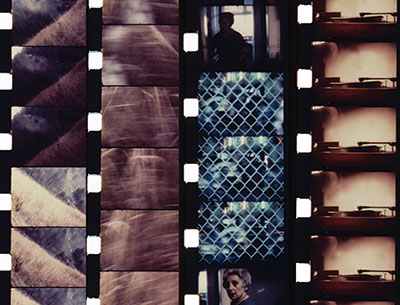
Retrospective of Saul Levine’s Films at the Harvard Film Archive
Saul Levine, Part I: 1966-77
Sept 11,7pm
Sept 13,7pm
Sept 14th
With a monumental filmography that dates back almost fifty years and seems to grow monthly (if not weekly), Saul Levine (b. 1943) long ago established himself as a central figure in American experimental cinema. He is also a key member of the filmmaking community in Boston and Cambridge, not only because of his own work but also for his passionate, tireless and inspiring roles as both a professor at the Massachusetts College of Art and Design and the programmer of the MassArt Film Society, one of the foremost venues for experimental cinema in the area. The Harvard Film Archive is extremely excited to present the first in a number of programs designed to help local audiences acquaint, or re-acquaint, themselves with Levine’s impressive body of work, from the beginnings to the present day.
This initial program covers the first dozen or so years of Levine’s prolific filmmaking career, which began in 1965 in his hometown of New Haven, Connecticut. Levine quickly gravitated to 8mm and Super 8 as formats in which he could work easily and inexpensively, shooting the world he saw around him: colleagues, collaborators, lovers, political actions and demonstrations, the city and landscapes of New England and Chicago. Like other filmmakers who emerged on the experimental scene in the mid- to late 1960s, including Warren Sonbert and Robert Beavers, Levine’s work embraces the structuralist impulse to foreground cinema’s formal elements while celebrating the camera’s ability to capture the beauty and texture of everyday experience.
Helpfully, for one as prolific as he, Levine organizes many of his films into series, indicated by the title of the individual films. Although the series continues to this day, the “Notes” cycle encompasses much of his work from the 1960s and 1970s. By labeling these films “notes,” many addressed to friends, Levine foregrounds their brevity and intimate nature. The label also helps give the works a casual quality, something off-the cuff, rather than a grand statement.
Almost all of Levine’s work is based in montage, and especially in the films shot on 8mm and Super 8, the splice becomes a recurring visual event. While the splice—the joining of two pieces of film by tape or glue—was typically invisible by the time a film was projected, Levine foregrounds his splices, partly by necessity but also as a gesture that brings together the body of the film and the mind of the filmmaker, as well as the hand of the filmmaker and the spirit of cinema.
Besides the “Notes” and other similarly diaristic films, this program also includes the found-footage work A Big Stick/An Old Reel, which highlights the political charge of Chaplin’s Little Tramp, and Star Film—an abstract exploration and exploitation of the iconic five-point star—which could have been inspired by Jasper Johns.
Smitten, melancholic or tender, what Levine’s films have in common is a heartfelt quality—the films always seem completely honest and direct. To experience them is to understand what has made Levine such a profound influence, especially on such former students as Luther Price, Anne Charlotte Robertson and Jonathan Schwartz. – David Pendleton
